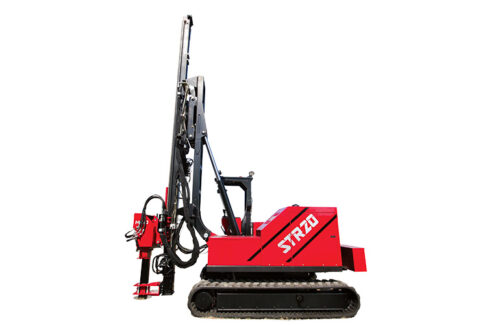![]()
有关太阳能电厂的棘手问题:
1. 如何保护光伏发电厂在失去公用电力时免受冰雹损坏?
2. 冰雹和风的风险如何比较?
3. 单面光伏组件与双面组件对电池破损和玻璃破损的冲击能量差异是多少?正面与背面的影响?采用更薄的玻璃和框架,降低组件成本的努力如何影响组件的耐用性?
4. 什么时候转入风,远离风,保护光伏?
5. 业主和 EPC 如何负责任地管理极端天气风险,以确保单一事件不会大大超出单一事件的保险范围?
RETC(可再生能源测试中心)首席执行官 Cherif Kedir 和 Nextracker Inc. 质量和可靠性副总裁 Kent Whitfield 举办了一场具有里程碑意义的网络研讨会,其中展示了回答这些问题和其他问题的经验实验室、现场和详细分析。
正如 Cherif 解释的那样,RETC 开发了一个测试协议,即 RETC 冰雹耐久性测试 (HDT) 序列,该序列根据冰雹的大小、质量和撞击速度对不同的光伏组件进行一系列具有不同动能的冰雹撞击,各种不同的冲击角度。为一系列模块设计提供了富有洞察力的结果。
那么,当公用电力中断时,如何保护光伏电站免受冰雹影响呢?极端天气故障安全。以下是它的工作原理……每个 NX Horizon 跟踪器都配备一个集成电池……当站点断电时,跟踪器将快速(<1.5 分钟)移动到防御性收起位置,通常为 60 度……操作员零干预或主动通信命令. 该功能最近在一个失去主变压器的公用事业规模发电厂上得到验证。最近光伏电站的保险费率飙升,一些保险公司对“单一事件”损失设定上限,以便业主对超过上限的损失负责。
肯特提出的数据支持“冰雹和风的风险需要单独和一起评估,并且被动和主动风险降低计划都必须到位,作为全面风险缓解战略的一部分”。
极端天气正在增加。必须描述风险并应用技术解决方案来减轻风险。出色的工作和见解 Cherif 和 Kent,很荣幸能一起工作。
原文:
Tough questions regarding solar power plants.:
1. How do you protect a PV plant from hail damage upon loss of utility power?
2. How do hail and wind risks compare?
3. What is the impact energy difference between mono-facial PV vs bifacial modules for cell breakage, and glass breakage? And front vs back impact? And how have module cost reduction efforts, with thinner glass and frames, affected module durability?
4. When should you turn into the wind, and away from the wind, to protect PV?
5. How does an owner and EPC responsibly manage extreme weather risk to ensure a single event doesn’t vastly exceed single-event insurance coverage?
Cherif Kedir, CEO of RETC (Renewable Energy Test Center), and Kent Whitfield, VP Quality and Reliability at Nextracker Inc., presented a landmark webinar which presented empirical lab, field, and detailed analysis that answered these and other questions. The session was moderated by Tim Sylvia of pv magazine USA and you can watch it and download the materials, with no registration, via the link below.
As Cherif explained, RETC has developed a test protocol, the RETC Hail Durability Test (HDT) sequence, which subjects different PV modules to a range of hail impacts with varying kinetic energies based on hail size, mass, and velocity at impact, with a variety of different impact angles. Insightful results were presented for a range of module designs.
So how do you protect a PV plant from hail when utility power is lost? With extreme weather FAIL-SAFE. Here’s how it work…every NX Horizon tracker features an integrated battery…when site power is lost, the tracker will rapidly (<1.5 min) move to a defensive stow position, typically 60 degrees…with zero operator intervention or active communication command. This functionality was recently validated on a utility scale power plant which lost its main transformer. Recently insurance rates have skyrocketed for PV plants, and some insurers cap “single event” losses so that the owners is liable for damage above the cap.
Kent presents the data to support “both hail and wind risk need to be assessed, individually and together, and both a passive and active risk reduction plan must be in place as part of a comprehensive risk mitigation strategy”.
Extreme weather is increasing. It is essential to characterize the risks and apply technology solutions to mitigate them. Fantastic work and insights Cherif and Kent, it is an honor to be working together.












